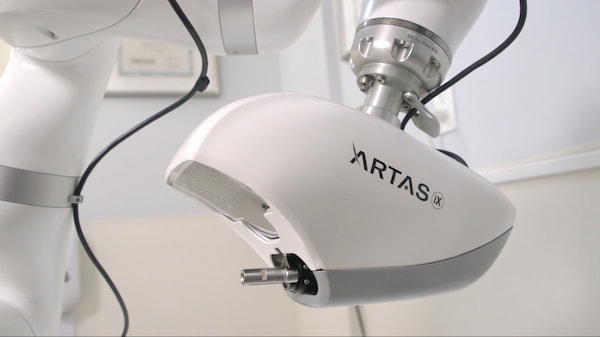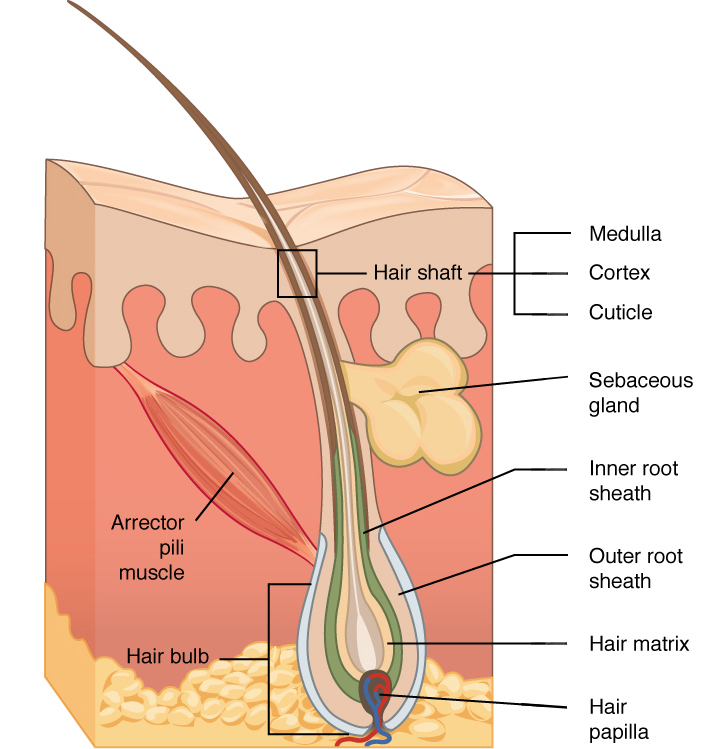Throughout history, a major component of people’s image has been hair. It has played a factor in social status, acceptance, and rejection. Arguably, hair even till this day holds itself as one of the most important components to a person’s overall look and style. Though today’s varying hairstyles are more based around the idea of vanity, culture still has its hold on it. In today’s day and age, baldness is a rather accepted hairstyle. For some, it is a personal choice that defines their features the best. However, for others it can be a source of insecurity, negatively impacting the self-esteem of the person. That’s where we step in…

Here at Hair By Dr. Max, Restoration Center, we offer the latest technology in hair restoration services. From the Artas iX Robotic Hair Restoration technology, to NeoGraft Hair Restoration, we stand as a one-stop place for all hair and cosmetic procedures you may be interested in. Dr. Maxim Chumak is not only a certified ARTAS® Platinum Provider, having performed many successful hair restoration procedures, but Hair By Dr. Max, Restoration Center also serves as a National ARTAS® Training Center. Thus, many doctors who are new to the Artas iX technology are taught how to properly and efficiently function the system by Dr. Chumak. Furthermore, Dr. Maxim Chumak strongly believes it is necessary for the surgeon to be present throughout the entire procedure. That is why Dr. Maxim Chumak takes only one patient per day and personally performs every step of the procedure. We are proud to have impacted the lives of the many patients we have come to meet. Restoring confidence and bringing our patients’ desired image to life is what drives us to continue to be a leader in hair restoration.
However, in order to truly understand how we can mitigate hair loss, we must learn about hair loss itself. We will go over all aspects of hair; its anatomy, growth cycle, as well as all facets of hair loss. If you’d like to learn more about hair loss, feel free to read up on our Articles. Topics covered range from the Top 5 Best Vitamins For Hair Growth, to Common Myths About Hair Loss.
HAIR ANATOMY

Hair has two separate structures:
1. The Hair Shaft: Composed mainly of the strong protein, keratin. This protein also makes up nails and the outer layer of the skin. Each strand of hair contains three layers:
-Medulla: The medulla is the innermost layer found in large and thick hair.
-Cortex: This is the middle layer, which provides strengths as well as imparts color and texture to the hair.
-Cuticle: This outermost layer is made up of tightly packed scales that form an overlapping structure similar to the roof shingles and function as a protective coat over the cortex.
2. The Follicle: Also referred to as the hair “root”, the follicle is comprised of the following structures:
-Dermal Papilla: Made up of connective tissue and a capillary loop creating the place where hair production originates and where hair receives its nutrients.
-Hair Bulb: Located above and around the papilla; it contains a collection of epithelial cells interspersed worth cells producing a pigment called melanin. The more melanin present, the darker the hair. This structure is also known as the hair matrix, as it is responsible for the manufacturing of hair.
-Sebaceous Gland: A microscopic exocrine gland in the skin that opens into a hair follicle to secrete an oily or waxy matter, called sebum, which lubricates the hair and skin of mammals.
-Arrector Pili Muscle: Small muscles attached to hair follicles in mammals. Contraction of these muscles causes the hairs to stand on end, known colloquially as goose bumps.
THE PHASES OF HAIR GROWTH CYCLE
As opposed to other mammals, hair loss in humans are much more random and sporadic rather than by season. The three phases of hair growth cycle are:
1. Anagen: The active growth phase during which the cells in the matrix are dividing rapidly, adding to the hair shaft. During this phase, the hair grows approximately 1-2cm per month.
2. Telogen: This phase describes the resting time for the hair follicle. During this phase, a secondary hair germ forms from a band of epithelial cells that move upward, often seen during graft dissection as a short, smaller version of the hair bulb.
3. Catagen: A short transition phase that occurs at the end of the anagen phase during which the hair follicle receives a signal to stop growing. Shortly after the hair growth stops, the dermal papilla contracts and releases the hair shaft from the follicle allowing hair to shed.
THE HAIR CYCLE

Throughout one lifetime, each hair follicle goes through 10-20 growth cycles. Each cycle lasts a different time:
- Anagen: 3-10 years
- Catagen: 2-3 weeks
- Telogen: 3-4 months
As far as hair growth in terms of length, this is dependent on the person’s active phase of growth. Those with a short active phase growth will have difficulty growing their hair past a certain length, whereas those with a long active phase of growth are able to have their hair grow much longer. For example, hairs on the arms, legs, eyelashes, and eyebrows have a very short, active growth phase.
HAIR LOSS CAUSES
Out of the approximate 5 million total hair follicles on the human body, roughly 100,000 are on the scalp. The medical term for hair loss is known as Alopecia, and can be caused by varying factors. Some factors that can cause (temporary or permanent) hair loss include:
- Medical Conditions: Thyroid Disease, Alopecia Areata, Ringworm (scalp infection), certain medications for cancer, high blood pressure, arthritis, depression, heart problems.
- Psychological/Emotional factors: Trichotillomania (Compulsion to pulling out one’s own hair). Emotional factors include a death in the family, extreme weight loss, a high fever, ect.
- Physical factors: Traction hair loss can be due to hairstyles that put pressure on the follicles by pulling the hair back very tightly. A diet lacking in essential vitamins can also contribute to hair loss.

Male Pattern Hair Loss
Androgenetic Alopecia, also known as Male-Pattern Baldness, is the most common cause of hair loss.

Female-Pattern Hair Loss
Hair loss in women differs from hair loss in men due to the nature of how the hair changes.

Unpatterned Alopecia
Unpatterned Alopecia is a rare type of widespread hair loss that permeates throughout the entire scalp.
THE SEVEN STAGES OF HAIR LOSS INCLUDE:
- Stage 1: No significant hair loss or recession of the hairline.
- Stage 2: There is a slight recession of the hairline around the temples. This is also known as an adult or mature hairline.
- Stage 3: The first signs of clinically significant balding appear. The hairline becomes deeply recessed at both temples, resembling an M, U, or V shape. The recessed spots are completely bare or sparsely covered in hair.
- Stage 3 Vertex: The hairline stays at stage 2, but there is significant hair loss on the top of the scalp (the vertex).
- Stage 4: The hairline recession is more severe than in stage 2, and there is sparse hair or no hair on the vertex. The two areas of hair loss are separated by a band of hair that connects to the hair remaining on the sides of the scalp.
- Stage 5: The two areas of hair loss are larger than in stage 4. They are still separated, but the band of hair between them is narrower and sparser.
- Stage 6: The balding areas at the temples join with the balding area at the vertex. The band of hair across the top of the head is gone or sparse.
- Norwood Class A: The class A variation of the Norwood scale is a slightly different and less common progression of hair loss. The main differences are that the hairline recedes back uniformly, without leaving an island of hair in the middle, and there is no bald area at the vertex. Instead, the hairline progresses directly from front to back.
NEXT STEP
A consultation with our Patient Care Coordinator is complementary and private.
This is a great opportunity for you to learn more about the various male hair loss treatment options available at Hair By Dr. Max, Restoration Center and have all your questions thoroughly answered.
